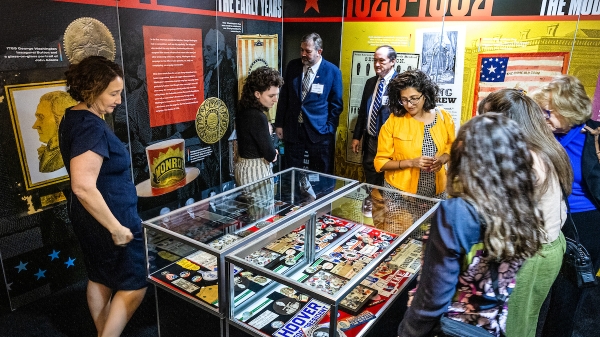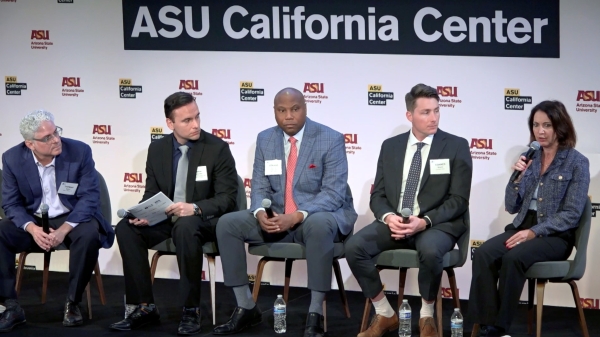Reports of several major shake-ups rocked the news industry this week, including an offer by media giant Gannett Co. to purchase Tribune Publishing Co., and the announcement that the New York Times was downsizing its staff abroad.
To talk about the business of news, ASU Now turned to Tim McGuire (left), the Frank Russell Chair of Journalism at the Walter Cronkite School of Journalism and Mass Communication. McGuire teaches courses on ethics and the balance of profit and the pursuit of the common good in journalism.
Question: Are newspapers putting off the inevitable? Is the business model unsustainable?
Answer: We certainly are heading toward some super-operations; obviously Gannett is attempting to consolidate a lot of the major markets. Despite their cuts and despite their challenges, the New York Times and the Washington Post will be around for a long time. You’ll have a lot more bifurcated media — you’ll have some big names and national powerhouses, and then you’ll have strong local operations, but we can’t get hung up on newspapers. Most of the things we knew as newspapers are going to be news operations: They will be multiplatform that will probably have a print edition some days of the week, they’ll be very prominent online, and they’ll be doing video. As a business model, they are going to morph into something we don’t really have a reference for. But right now most of those newspapers remain the dominant newsgathering force in their community. If they can adjust, they will continue to be that major news gathering force. We are not in a one-size-fits-all environment.
Q: Will we see those markets dominated by some of those larger media outfits?
A: The national newspapers will remain strong because they have a national base. The big regional newspapers are under real siege because mass is no longer the operative approach for news. Niches are, like specific subjects and interest areas. We’ve cut down resources for a paper like Phoenix or Minneapolis to cover an entire community, so what they will do most likely is look for partnerships to cover some of the more geographic and psychographic areas. Organizations who figure out how to effectively use partnerships are going to win. Papers with Gannett partnerships are covering national news with USA Today and distributing it throughout their newspapers. That’s a perfect example of a partnership that gains them leverage, then they can strictly do the local reporting.
Q: Do you see this as threatening independent journalism?
A: The market is going to decide that. You have a MinnPost in Minneapolis, you have a Voices of San Diego, you have a lot of upstart news organizations that are providing competition and thorough coverage of a market. Whenever there’s a vacuum, somebody fills it. I always use the example of the Downtown Devil. Seven or eight years ago, 12 students looked around when the Cronkite School moved downtown and said, you know, we need a publication down here that covers this campus. They threw five bucks each into the kitty and within a week they had a web publication up and running, and it still runs today. There are no barriers to entry anymore. If there’s a vacuum in a market, someone is going to fill it.
Q: Is there the opportunity for disruption?
A: There may well be on the drawing board a technological innovation that could make me look like an idiot. Twenty years ago, I predicted a lot of what has happened but you can’t predict all of it. We didn’t predict mobile or how powerful smartphones were going to be. That’s the big caveat — that there could be a technological breakthrough that changes the ballgame in a heartbeat.
More Law, journalism and politics

Exhibit uses rare memorabilia to illustrate evolution of US presidential campaigns
After one of the most contentious elections in history, a new museum exhibit offers a historical perspective on the centuries-old American process.“We The People! Electing the American President” had…

TechTainment conference explores the crossroads of law, technology, entertainment
What protections do writers, actors, producers and others have from AI? Will changing laws around name, image and likeness (NIL) eliminate less lucrative college sports programs?And what does…

How to watch an election
Every election night, adrenaline pumps through newsrooms across the country as journalists take the pulse of democracy. We gathered three veteran reporters — each of them faculty at the Walter…

